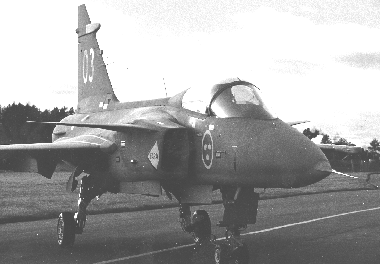
Latin American armed forces, some held under tight budgetary control in punishment for past excesses, are seeing purse strings being loosened. Re-equipment plans long held in abeyance are being dusted off, and, as a result, defence contractors are gearing up their marketing machines.
Brazil is leading the charge, with a comprehensive plan which includes new and upgraded fighters, trainers and transports. The first project to get under way is the ambitious SIVAM Amazon surveillance programme, intended to prevent illegal exploitation of the region's natural resources while providing for control of its airspace and the interdiction of smuggling operations. Prime contractor Raytheon is responsible for integrating the network of space, air and land based sensors making up SIVAM.
Key aviation elements of the programme are the surveillance and light attack aircraft that will, respectively, patrol and police Amazon airspace. The surveillance aircraft are based on Embraer's RJ-145 regional jet, the principal version carrying an Ericsson Erieye airborne early warning radar. The AL-X light-attack aircraft is an armed development of Embraer's EMB-314 Super Tucano, which will be produced in single and two seat versions and which will be used in both the enforcement and advanced training roles - the latter replacing the air force's Embraer EMB-325 Xavante jet trainer. Israel's Elbit is to supply the AL-X weapon system.
The next programme to get under way will be the upgrade of 40 Brazilian air force Northrop F-5s to serve as interim combat aircraft until a new fighter is acquired early in the next century. Information has been requested already on candidate aircraft and likely competitors are the Boeing F-1 8, Dassault Mirage 2000, Lockheed Martin F-16 and Saab JAS39 Gripen.
Other acquisitions planned by the air force include new lead-in fighter trainers, tactical transports and heavylift helicopters. British Aerospace is promoting the Hawk trainer, while Lockheed Martin is trying to interest Brazil in both the C-130J and smaller C-27J transports. The Boeing CH-47 Chinook is favoured for the requirement to support SIVAM, but Israel has offered upgraded Sikorsky CH-53s.
Last December, the Brazilian navy received permission to operate fixed wing aircraft for the first time. It is negotiating to acquire 23 McDonnell Douglas A-4 Skyhawk attack aircraft from Kuwait to equip its carrier, the Minas Gerias. Previously, the air force operated a detachment of Grumman S-2 Tracker anti submarine aircraft from the carrier, which is being renovated to restore its catapult system to operation.
Chile has its well publicised requirement for new fighters to replace initially its Cessna A-37 light-attack aircraft. The winning aircraft is expected to replace eventually the Mirages and F-5s upgraded locally by Enaer with assistance from Israel Aircraft Industries. The air force also has trainer and transport requirements to be fulfilled. Argentina's armed forces are still hemmed in by tight budgets, but the air force is receiving A-4 Skyhawks upgraded by Lockheed Martin with new weapons systems, including a version of the Northrop Grumman APG-66 multimode radar. The country has expressed interest in acquiring ex-US Air Force F-1 6s, but its most urgent requirement is for new advanced trainers. Lockheed Martin Aircraft Argentina is proposing to restart production of the Argentine-designed IA-63 Pampa jet trainer to meet this requirement.
Budget concerns dominate the re-equipment plans of the rest of the region's military. Venezuela, which recently acquired two used F-16s, plans to bring its aircraft up to Mid Life Update standard when funds permit.
Source: Flight International
















